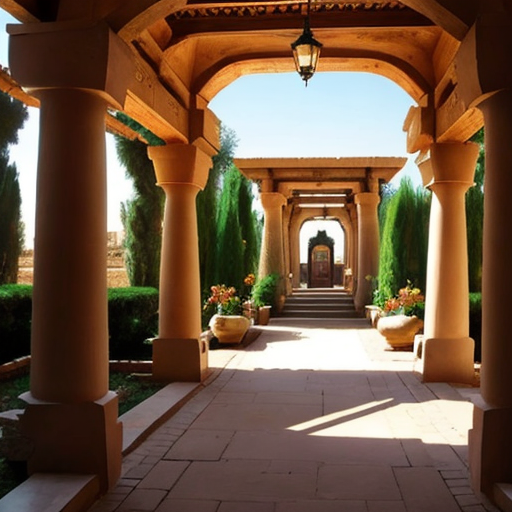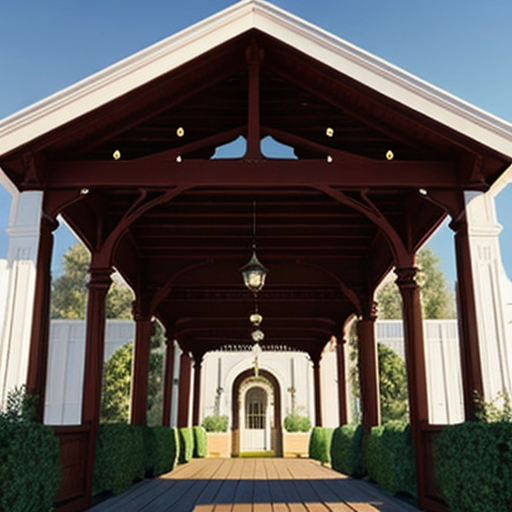IntroductionWhat is a pergola? A Pergola is an outdoor architectural structure typically found in gardens, yards, parks or on terraces. It consists of a framework covered with trained climbing or trailing plants, creating an open, yet defined space. A pergola is often used to enhance the beauty of outdoor spaces, provide partial shelter, and serve as a transition from indoor to outdoor areas. They can vary widely in design, size and materials. They commonly feature vertical posts or pillars that support cross beams or lattice.

Where did Pergolas originate? Pergolas seem to have originated back in ancient Egypt. We will discuss in more detail, the beginnings of pergolas as we progress, below. In very early structures, vines or reeds were often used to create shade and define outdoor spaces.
Table of Contents
Ancient Beginnings
Early on, wooden pergolas seem to have been most popular. Certain pergola structures also would have had stone incorporated at times. Several would have beautiful hanging gardens and were possibly places where the egyptian high court official would sit.

Rome was also an early, ancient place where pergola like structures came into existence. Romans often used colonnades and open structures to create shaded walkways in gardens. These structures were not only functional but also served aesthetic and recreational purposes.

Purpose and uses of early pergola-like structures
Pergolas served various practical, symbolic, and aesthetic purposes in different ancient civilizations. Below, I will give more examples of ancient pergola like structures. Romans used pergola like structures, often adorned with vines and flowers, in gardens and public spaces. These structures held symbolic significance and were associated with the divine.

In Ancient Egypt, columns or pillars were used to provide shade from the intense sun. These early versions of pergolas helped create outdoor spaces for relaxation and gatherings.
Renaissance Revival
Pergolas in the Renaissance were designed with a focus on aesthetic beauty. The structures were often elaborate and adorned with decorative elements, reflecting the architectural and artistic trends of the time.
Pergolas also continued to be supporters of climbing plants. Vines, such as grapevines or flowering plants, were trained to grow on the vertical posts and along the cross beams, creating a visually pleasing and harmonious integration of nature into the architecture.
19th Century Expansion
The 19th century, particularly the Victorian era, (1837-1901) was marked by a fascination with ornate and intricate designs. Pergolas from this period often featured elaborate detailing, decorative elements, and a sense of Victorian elegance.

Popularization in Europe and the United States
In the early to mid 20th century, pergolas were a part of garden and landscape design, particularly in Europe. They were often associated with classical or traditional garden styles. In the USA, pergolas were also present but were perhaps not as widespread as in Europe during this period.

Evolving styles and materials.
After WW2, there was a definite shift in architectural styles, and modernism became prominent. Outdoor spaces became more integrated into home designs.
Towards the end of the 20th century, there was a revival of interest in traditional and classical designs, leading to a resurgence in the popularity of pergolas. Homeowners in both the USA and Europe started incorporating pergolas into their outdoor spaces as a way to create shaded areas for entertainment and relaxation.
20th Century Innovations
In Europe, the popularity of pergolas has historical roots, and they have been a common feature in gardens, especially in regions with a Mediterranean climate. Homeowners in both the USA and Europe started incorporating pergolas into their outdoor spaces as a way to create shaded areas for entertainment relaxation
Pergolas in modern architecture
In recent decades, the popularity of pergolas has continued to grow as outdoor living spaces have become more important to homeowners. Modern designs and materials have been incorporated into pergola construction, making them versatile and suitable for various architectural styles.
Pergolas today
Pergolas today offer quite a few different styles and options. Modern pergola structures are more sleek and minimalistic, aligning with contemporary architectural styles.
The types of materials available to build a pergola, today, is much more than it ever has been. Most pergolas are made out of Aluminum, vinyl, wood, steel or a composite material.
Kits have also become increasingly more popular along with the trend of DIY building. Nowadays, a potential homeowner can order a kit directly from a manufacturer and have it precut and pre made to their exact specifications.

Conclusion
Pergolas have been around for thousands of years. They got their beginning in Ancient Egypt and Rome, and have developed much since those times. Pergolas are now made in more materials than just wood and are now also available in kits, for a DIY application.
Make sure to do some research and pick the style of pergola best for you!






